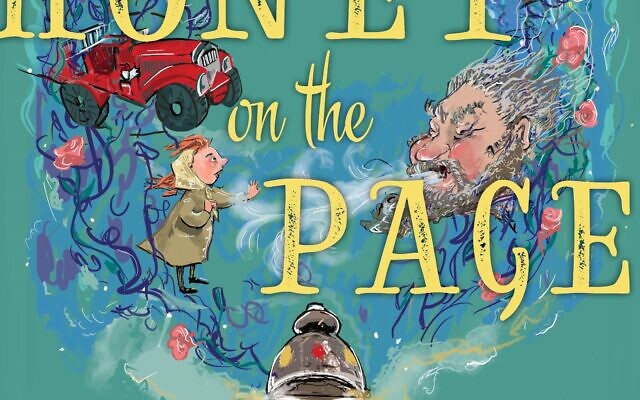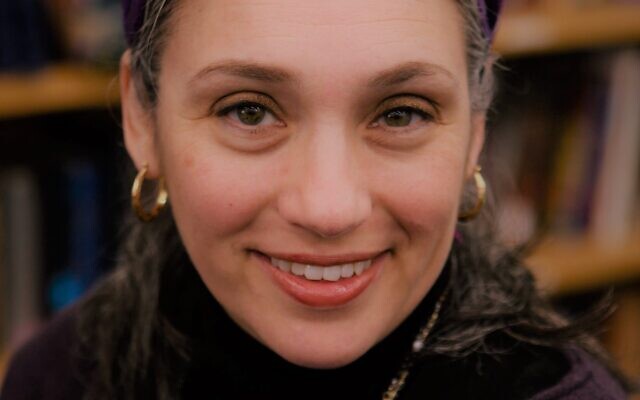‘Honey on the Page’ is a Sweet Read
Miriam Udel’s editing and translation of more than 50 stories, written in Yiddish by authors from many countries in first half of 20th century, is more than a children’s anthology.
Chana Shapiro is an educator, writer, editor and illustrator whose work has appeared in journals, newspapers and magazines. She is a regular contributor to the AJT.

Once primarily spoken and read by European immigrants, their children and chasidic groups, Yiddish language and culture is now studied in mainstream universities, where young women and men discover its rich nuances and highly emotive power.
College students can learn Yiddish language and study its literature, but most Jewish children of today, who love the antics of Dr. Seuss characters, have never heard a hilarious tale of the Jews of Chelm in Poland.
Here comes Miriam Udel to the rescue with her new book, “Honey on the Page: A Treasury of Yiddish Children’s Literature,” in which she translates nearly 50 stories and poems written in the early- to mid-20th century, when Yiddish was the everyday language of children all over the world, including America.

Udel is associate professor of German studies and Jewish studies at Emory University, where she teaches Yiddish language, literature and culture. In her introduction to her young readers, she writes:
The stories and poems you’ll read here were originally written in Yiddish, the language that the Jewish people spoke in eastern Europe for almost a thousand years, … that they carried with them as a precious heritage when they left Europe, … the stories and poems that I’ve translated into English catch a glimpse of the culture and civilization of kids who spoke Yiddish fifty, seventy-five, or a hundred years ago.
“Honey on the Page” reflects the one-time practice of Jewish teachers dropping honey on a student’s first schoolbook, to be tasted with delight and to become an embedded link between learning and sweetness. Even though the book is divided into eight distinct thematic categories, it’s fun to skip around.
I went from Zina Rabinowitz’s “Senor Ferrara’s First Yom Kippur” to two stories by Sarah L. Liebert, about an unusual girl from Brooklyn. I followed Moshe Kulbak’s allegory about the wind with Jacob Reisfeder’s folk tale, “A Boy and His Samovar.” It was hard to put the book down, underscoring that the best children’s literature speaks to adults, too.
Udel’s translations from Yiddish are so flawless that I “heard” the delightful tone and idiosyncrasies of the original. Here’s a sample from Yaakov Fichman’s “A Sabbath in the Forest:”
Once upon a time there lived a Jewish tailor in a small shtetl. He was known as Lipe the Tailor. He was a simple Jew who barely knew all the prayers, and he was very poor – it shouldn’t happen to anyone. But he managed to earn a crust of bread for himself, his wife Nechama, and their children, and he never — G-d forbid! — had to accept charity.
Parents will read stories from “Honey on the Page” aloud until their children can read by themselves, and most stories are simple, yet clever and subtle enough for every age.
I appreciated the thoughtful foreword by Jack Zipes (well known for his expertise on children’s literature), and I found Udel’s thorough introduction to be engrossing. Note her insight:
Yiddish children’s literature, deeply preoccupied as it is with the themes of identity, narrow escapes, fortuitous twists of fate and the exercise of power, seems more relevant now than ever. Well, certainly at least as relevant!
Many charming illustrations from the original stories are included, augmented with new illustrations by Paula Cohen. Brief biographies of the authors provide a context in which the stories were written, and are, in themselves, a window into Jewish history, a snapshot of the Jewish experience between the two world wars. Owners of “Honey on the Page” will take this book off their shelf over and over for many enjoyable reasons.
“Honey on the Page : A Treasury of Yiddish Children’s Literature,” edited and translated by Miriam Udel, is to be published in October by New York University Press, but is available for pre-order, www.nyupress.org/9781479874132/honey-on-the-page/.



comments